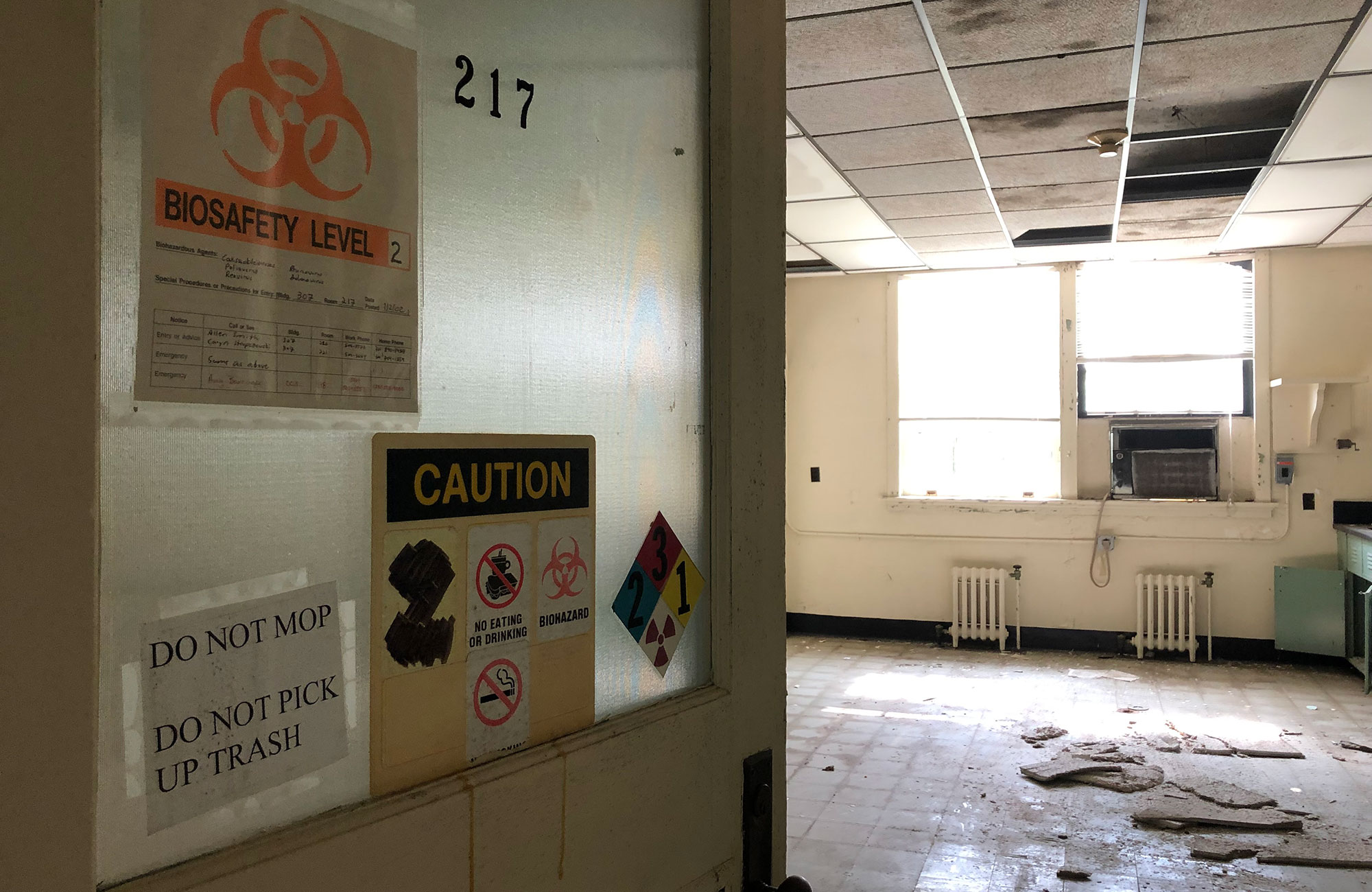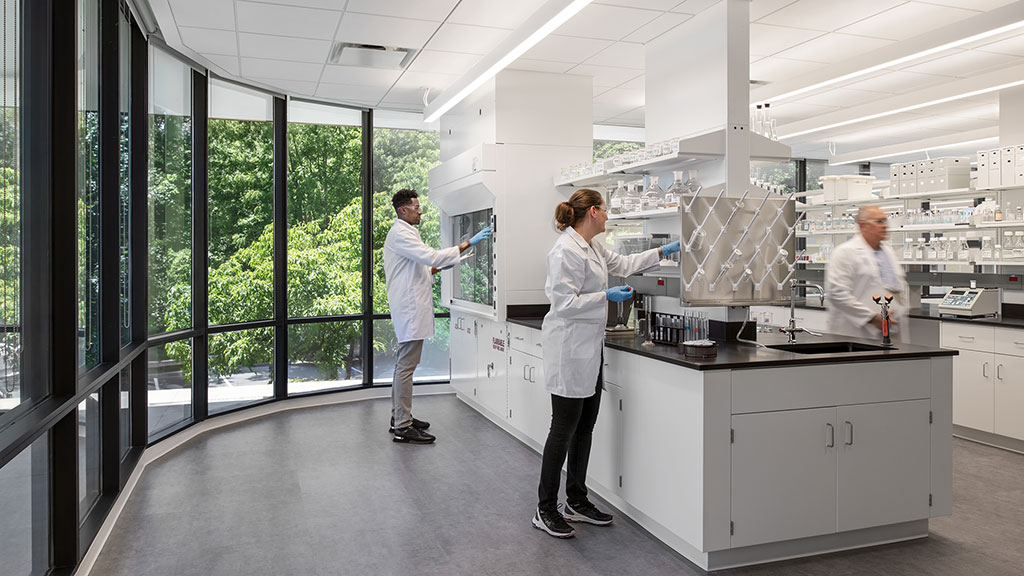Design for Laboratory Resilience: A Compliance Approach to Climate Risk Assessment
November 22, 2024 | By Mitsy Canto-Jacobs, Rives Taylor
The threats posed by extreme weather events are widespread and far-reaching. These risks pose increased threats for many industries in the built environment, including one critical building typology: research labs. Research laboratory facilities require more resilience and redundancy for their expensive contents, potentially dangerous biochemical materials, and valuable years of research.
At the 2024 Urban Land Institute Resilience Summit, a specialized track explored how leading real estate developers and investors are tackling climate risk in their real estate decision-making — leveraging new data and tools for climate risk assessment, preparing for greater climate risk disclosure, and navigating the changing landscape of legal and insurance risks driven by climate change.
This interest was based on the 2023 release of Bloomberg-led Task Force on Climate-related Financial Disclosures (TCFD), which offered guidelines for helping corporations navigate the impacts of climate change. By encouraging businesses to disclose climate-related financial information, the findings aimed to brace the global economy for risks and opportunities in their investments (Bloomberg Philanthropies).

We’ve identified some relevant findings since 2023, and how we might incorporate TCDF recommendations into the design and construction of scientific laboratories and animal research facilities.
Developing Resilience Checklists
Why do laboratories and animal research facilities need our attention? Losses due to power outages and weather-related facility shutdowns are irreversible, and the costs per incident may mean lifetime careers and loss of human and animal life.
Gensler’s Rives Taylor and Paul Wilhelms witnessed how unexpected precipitation and flooding in Houston resulted in billions of dollars of damage at University of Texas and Baylor Medical Center. Snowfall at the National Institutes of Health shut down critical support for extremely valuable transgenic rodents.
Resilience checklists cannot wait until the end of the design and construction administration phases for consideration and implementation. Architects, owners, and developers must ask: will a building be designed for resilience? How will the lens of resilient design be integrated throughout the entire process? Is the corporation or institution prepared if and when climate change impacts their economic interests? Does the company have capital savings in reserve if immediate repairs are imminent and insurance coverage is delayed or denied?
At both the underwriting and design phases, it is the duty of project team leaders to be transparent about the threat of climate risk and its impact on investment. Architects and engineers have a critical opportunity to propose proactive measures for disaster mitigation. Awareness and education will allow the clients to informed financial decisions about resilient design features.
Laboratory master plans must account for fire and flood protection, life safety, biosecurity, Federal Emergency Management Agency (FEMA) and National Oceanic and Atmospheric Agency (NOAA) data, actuarial and legal analysis, and insurance mapping and rate-setting policies. Climate-related financial risk is real and may halt or hinder business operations. The United States is seeing an increase in natural disasters, which in effect are causing insurance coverage policies to fluctuate due to billions in damages and claims.
Complying With Codes and Regulations
Governmental laboratories have embedded regulations to better plan for power outage protection, emergency procedures, and biological safety in conflict areas. As more commercial research and development stakeholders adaptively reuse buildings and convert office towers to tenant fit out laboratory space, protections must be enforced to mirror more closely those associated with governmental oversight.
Several jurisdictions in the U.S. have incorporated building and fire code allowances that support the implementation of lab suites in both higher education and non-production R&D facilities. When thoughtfully applied, this code compliance approach can support developers’ efforts in repositioning existing buildings for future laboratory use and create additional leasing flexibility for taller buildings on upper floors that may have otherwise not been suitable for laboratory use.
A model matrix for understanding how codes benefit buildings to respond to climate events can be tested in conjunction with data from NOAA and FEMA. As a result of certain jurisdictions adopting these code changes, lab buildings will be more efficiently designed, and therefore more attractive to prospective tenants in supporting economic, ecological, and cultural sustainability. Spatial needs of tenants can be reduced, while simultaneously increasing flexibility for chemical use. Improved efficiency and adaptability support sustainability and afford the opportunity to improve resilience.
Managing Risks and Reducing Loss
What checklist items do commercial property insurers such as Factory Mutual Insurance Company (FM Global) and Zurich Insurance Group recommend to lower premiums by as much as 15%? How can we as designers responsibly help our clients manage risk and reduce loss expectancy?
Questions to communicate include:
- How are labs and lab buildings damaged by extreme weather events?
- Who pays for damage to your lab after a climate change event?
- How fast is the recovery process?
- What are examples of the physical vulnerabilities that we can design for?
- What kinds of spaces should we design into resilient buildings?
- What are the correct setbacks and density for laboratory siting?
- How can we make facilities safer and more resilient for high value research?
- Would normal Standard Operating Procedures (SOPs) be affected by our plans for Emergency SOPS? In what way?
As laboratories and critical facilities of the future become vertical five-story boxes, designers will increasingly need to explain costs surrounding damage and liability, identify constraints for laboratories in high rise buildings, review resilient design features, and recommend financial benefits for operations and maintenance.
Innovative sustainable design of laboratory buildings must factor in risk of regional natural disasters and affected communities. The ability of a building to recover from unpredicted climate events can help save lives.
For media inquiries, email .

